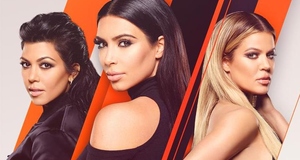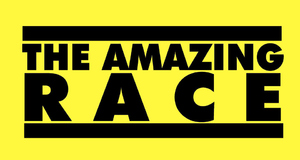Good Girls Gone Bad: Race and Gender in Oxygen's The Bad Girls ClubBecause women are usually portrayed as “catty” and “bitchy” by the media, BMP purposely cast women who they know are not going to get along in order to watch drama unfold. Season one’s cast included Ripsi, the rich, spoiled alcoholic from wealthy, small town Massachusetts alongside foils Ty—the renegade, in-and-out jail bird—and Leslie, the stripper, both from inner-city Atlanta, Georgia. Jodie, the Playboy Playmate and Zara, the naïve brat from small town New York, were directly cast to conflict with Aimee, the Philadelphia spitfire. However, when Ripsi gets blackout drunk and attacks Jodie and Kerry, the conniving “Southern Belle” and country singer from Nashville, she is subsequently removed from the show only five days into production. While the expulsion of Ripsi suggests there are consequences to actions, it also suggests that some women are so “bad” that they can never be fully rehabilitated. Thus, this allows the show to also produce a new stereotype and stigma for women: violent “bad girls.” Defining the women as “bad girls” produces a dichotomy between good, safe behavior and outrageously bad and entertaining behavior, encouraging women to produce more of the latter. For example, the opening narrative sequence of season one’s pilot episode, “It’s Easier to Be Bad,” is particularly guilty of causing this bifurcation. First, definitions of the words “bad” and “girl” are shown on the screen in pink to provide audiences with a context as to what constitutes a “bad girl.” Then a seemingly omniscient female narrator states, “Why are bad girls bad? Is their outrageous behavior hiding something deeper? Would they change if given the opportunity? To find out seven bad girls are moving in together. This is their story…and it’s not all pretty.”By framing the women, who actually range from ages 21 to 35, as “girls,” BMP condones and glorifies these “immature young women’s outrageous behavior” and almost suggests it is a rites of passage to womanhood. Moreover, the show also sends a message to young girls that it is okay to act like a “bad girl” since older women in their twenties and thirties are rewarded with camera time, an unlimited supply of alcohol and a fancy limo to chauffeur them to endless party venues. In this sense, normal behavior is portrayed as boring, undesirable and unworthy of attention not just from men, but from television producers and casting crews. In turn, instead drama, fighting and excessive drinking is advertised as a more “normal” part of girls’ lives. The show’s changing format in season three only exacerbated this negative and violent portrayal to garner higher ratings. Season’s two format, for instance, was contradistinctive from seasons three through seven in that it was the only season 23 the cast was given multiple mandatory non-profit jobs that required certain skills such as planning, teamwork, decision making and cooperation to help them build work ethics for success in later life. If a cast member quit the job or failed to attend, they were removed from the show immediately.24 Yet, season three’s introduction of bad girl “nicknames” (for purposes of branding the women as ‘distinct celebrities’), a gaudy photo shoot and a “Bad Girls Club Creed” officially ended the show’s advertising and promotion of itself as a tool of change. The show instead changed to a marketing scheme that glorified being “bad.” The BGC Creed reinforces this idea of women as violent. It says, “A Bad Girl knows what she wants and how to get it. She makes her own way, makes her own rules and she makes no apologies. A Bad Girl blazes her own trail and removes obstacles from her path. A Bad Girl fights and forces her way to the top with style and beauty. A Bad Girl believes in jumping first and looking later. People will love you. People will hate you. Others will secretly wish to be you. A Bad Girl is you.” 25 Other changes included using celebrity gossip blogger Perez Hilton as the seasons’ reunion host from season three through seven for ratings increases. Prior to Hilton, psychologist Dr. Stan Katz headed season one’s reunion by forcing the cast of women to critically analyze their behavior and apologize for their actions, while Star Jones hosted season two’s reunion and served a similar purpose as Katz. The shifting format occurred at the same time entertainment media giant NBC Universal purchased Oxygen from its original owners in 2007-2008. 26 The issue inherent within the shifting format is that Oxygen, which is supposed to be a channel for empowering women, also cancelled many of its other shows that targeted women’s health more for reality television based shows such as BGC. Now, as the channel’s most notorious show, BGC currently trumps other shows of its kind in both ratings and viewers. Additionally, audience reception—specifically women—to the show suggests that it too is becoming a household name and some women enjoy branding themselves as “bad girls.” For example, the exponential number of auditions and women vying to be on the show increased its number of casting cities after seasons one and two due to growing notoriety and interest. The show also began traveling to different cities for filming after its breakthrough season produced the highest ratings ever for the show. Finally, while women themselves audition for the show, it is ultimately the casting directors and editors representing a hegemonic male perspective with a male gaze that ultimately “craft” the show for audiences. This is particularly noticeable with the racial makeup of the various seasons’ cast.Continued on Next Page » Suggested Reading from Inquiries Journal
Inquiries Journal provides undergraduate and graduate students around the world a platform for the wide dissemination of academic work over a range of core disciplines. Representing the work of students from hundreds of institutions around the globe, Inquiries Journal's large database of academic articles is completely free. Learn more | Blog | Submit Latest in Business & Communications |
















